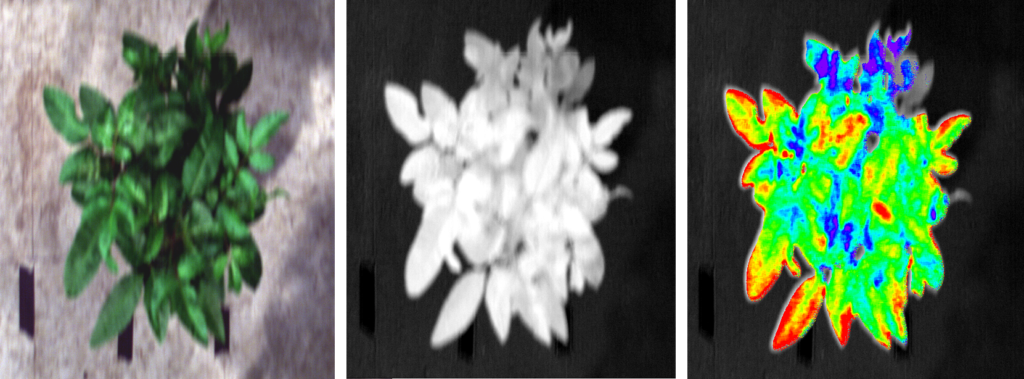Guest article by Stephen Lantin
Imagine this: you’re an astronaut and you want to grow plants in space, but you’re worried because you might be too busy to water them every day, or worse—a plant disease might sneak up on you and ruin your next salad! What do you do?
Get computers to run the farm: Automate your plant growth chamber!
Although we’ve never had a fully automated space farm, researchers have been studying and developing automation technologies on Earth. Much of this research has taken place in a field called controlled environment agriculture, or CEA. Over the past five decades, the CEA industry has managed to grow much higher yields of crops such as lettuce, tomatoes, and microgreens with fewer inputs than traditional farming.
What makes CEA so efficient—and what will help make your space farm successful—is tight control of environmental conditions. To do this, all we need is the right scheduling software, sensors, and specialized hardware. By controlling parameters like lighting, temperature, and humidity, we can maximize your yield without you having to lift a finger!

Monitoring the environment is crucial, but we also need to monitor the plants themselves to see if they’re growing properly. That way, if something goes awry, we can jump into action to save our crop (and our salad)! One way that we can do this is through hyperspectral imaging of plants. While a standard camera captures light in three wavelengths—red, green, and blue—a hyperspectral camera can capture light in many different wavelengths. These extra wavelengths are invisible to humans, but hyperspectral cameras use them to tell us information that we can directly relate to a plant’s internal biochemistry.
Though hyperspectral imaging has been applied extensively in remote sensing of great swaths of land and ocean (see NASA’s AVIRIS, EO-1 Hyperion sensor), it has only recently been applied in controlled environment agriculture. Researchers at the University of Florida and Germany’s DLR have recently demonstrated imaging in a small greenhouse in Antarctica. With specialized cameras, they used NDVI (normalized difference vegetation index) to understand plant health. Using NDVI, computers process pictures of the plant, making calculations for every pixel. Then, the computer creates an image that tells us about overall plant health. With only a couple cameras and computers, the researchers could tell how healthy the plants were from thousands of miles away. This has applications for space agriculture: astronauts could keep track of plants from a distance, and ground control could collect and analyze this data too.

Beyond NDVI, there remains much more to be explored with hyperspectral imaging. Machine learning algorithms can be trained to collect and interpret detailed plant health/nutritional information—without the need for human intervention! This human intervention part is crucial. Astronauts do many jobs, from fixing life-threatening hardware problems to doing dozens or hundreds of experiments. As we move to the Moon and eventually to Mars, it becomes increasingly important to make sure astronauts don’t need to spend all their time farming just to survive. By using highly specialized cameras, software, sensors, and hardware, space farming will become easier and more efficient than ever before.
Let’s grow plants in space!
Guest article by Stephen Lantin, a PhD student at the University of Florida who specializes in hyperspectral imaging systems. Connect with him on LinkedIn or email him directly at slantin@ufl.edu.
